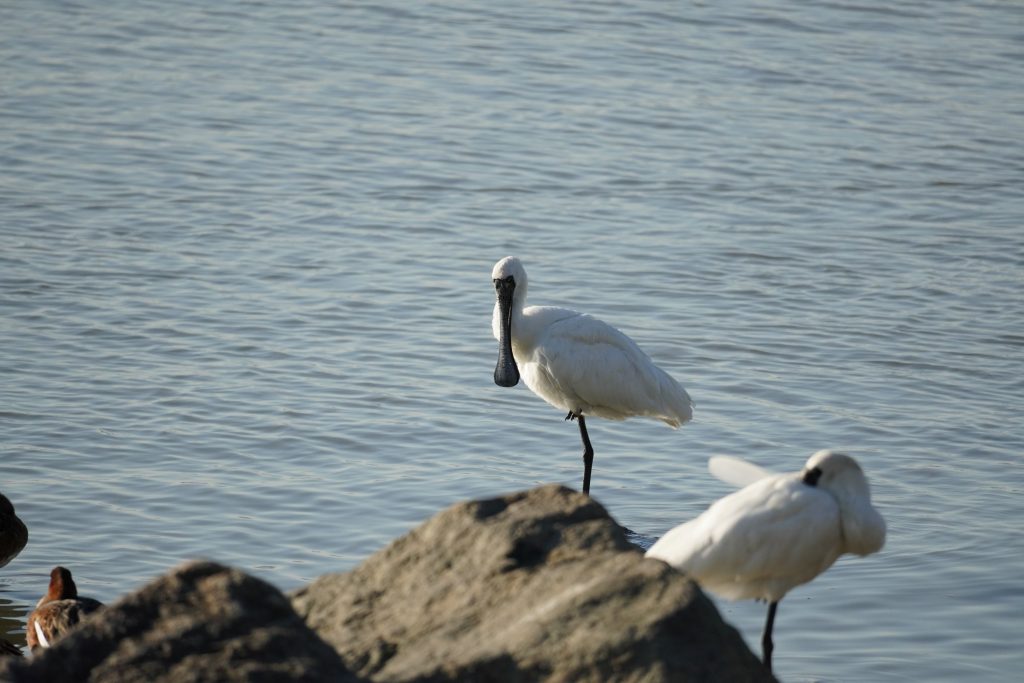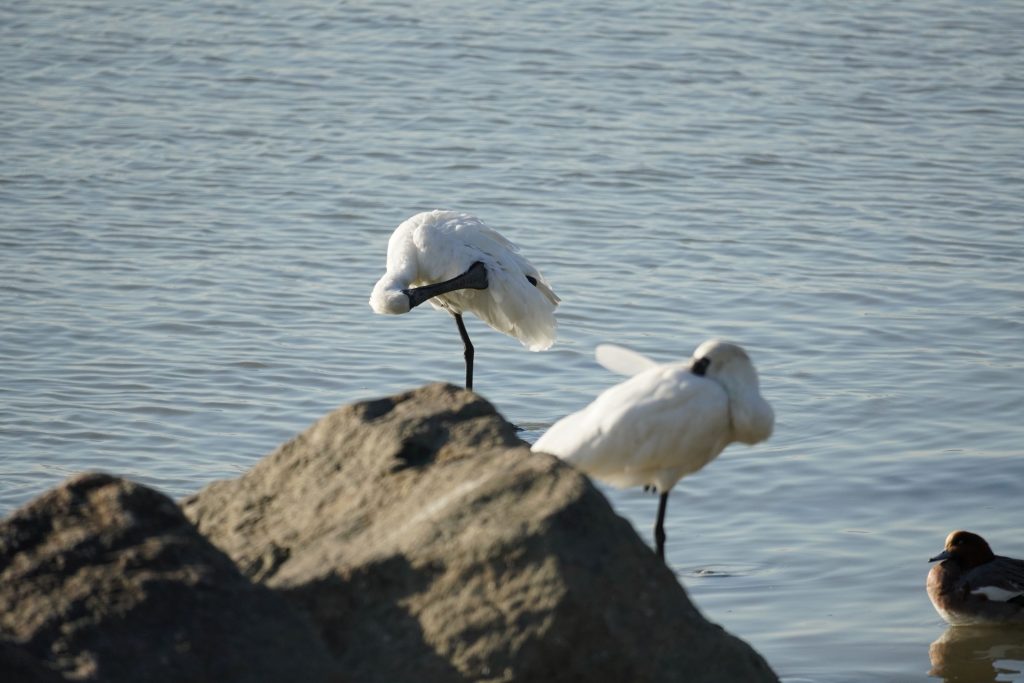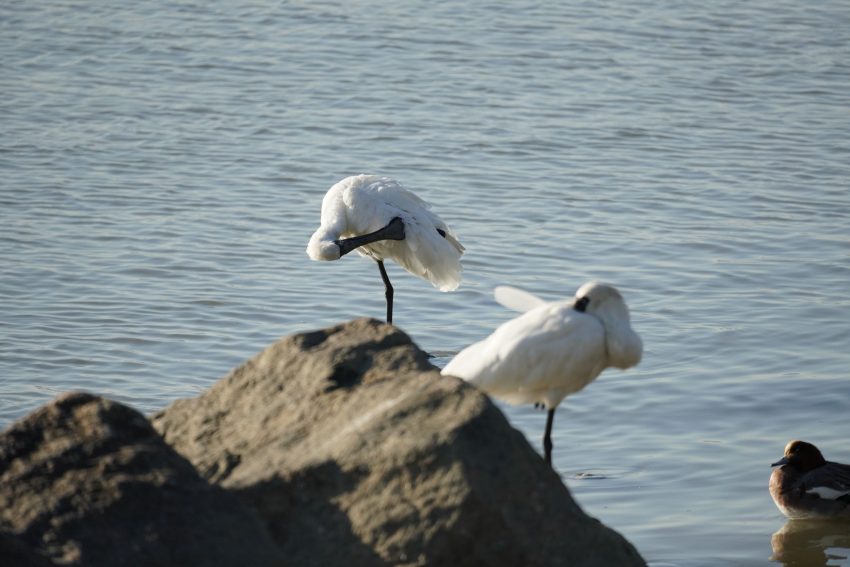The Black-faced Spoonbill (Platalea minor) is a rare and critically endangered bird species that can be found in the mangrove wetlands of Shenzhen, China. Known for its distinctive black face and spoon-shaped bill, this bird has become a symbol of both the unique biodiversity of the region and the ongoing efforts to conserve rare species.

The Black-faced Spoonbill is a migratory bird, primarily inhabiting coastal mudflats and mangrove swamps during the winter months. These birds are especially known for their striking appearance, with a white body, black facial skin, and a large, flat bill that tapers into a spoon-like shape. They use their bill to sift through the mud for food, primarily feeding on small fish, crustaceans, and mollusks.
In Shenzhen, the mangrove areas along the coast provide an essential habitat for these birds, offering a safe place to roost and feed during their migratory journey. Shenzhen’s mangrove forests, particularly those in the Shenzhen Bay area, are one of the most important stopover sites for Black-faced Spoonbills in East Asia. These wetlands also provide a crucial breeding ground for the birds, where they can raise their young in relative safety from predators and human disturbance.

Unfortunately, the Black-faced Spoonbill is classified as “Endangered” by the International Union for Conservation of Nature (IUCN), with its population declining due to habitat loss, pollution, and human encroachment. Efforts to protect these birds in Shenzhen include habitat restoration projects, stricter conservation laws, and monitoring programs to ensure that the mangrove ecosystems remain intact. The establishment of nature reserves and protected areas, such as the Shenzhen Mangrove Nature Reserve, has been a key part of the conservation strategy.
In recent years, the population of Black-faced Spoonbills in Shenzhen has shown signs of recovery, thanks to these dedicated conservation efforts. As of now, over a hundred Black-faced Spoonbills are regularly spotted in the Shenzhen Bay area during the winter season, which represents a significant part of the global population. Their presence in the region serves as a reminder of the importance of coastal wetlands and the need for continued efforts to preserve these vital ecosystems.

The Black-faced Spoonbill’s story highlights the delicate balance between human development and environmental preservation. As more people become aware of the significance of protecting these rare birds and their habitats, Shenzhen is emerging as a model for coastal ecosystem conservation, showcasing how local actions can have a global impact on biodiversity conservation.
